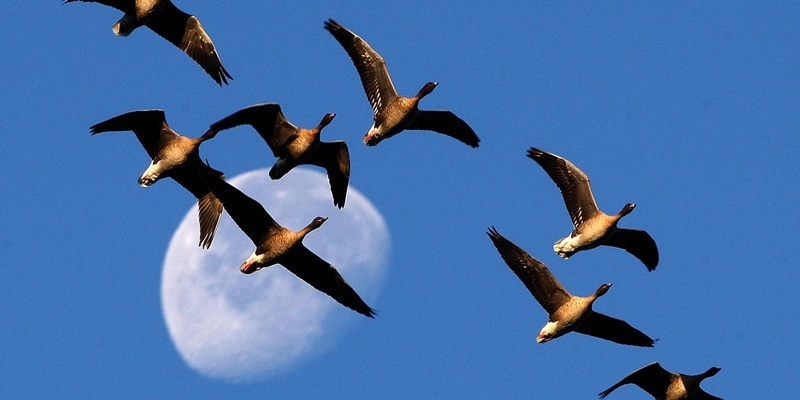An environmental watchdog may have cooked the goose of developers looking to capitalise on Fife’s wind-related credentials.
Scottish Natural Heritage has objected to no fewer than five applications for wind turbines, after warning they could place thousands of pink-footed geese at risk.
Objectors were quick to welcome what they termed the ”unprecedented” intervention, insisting it represents a major blow for the developers.
SNH objected to various proposals for turbines at South Cassingray, North Baldutho, South Baldutho and Knightsward ”pending further investigations”.
All of the planned turbines lie within 20km of three Special Protection Areas (SPAs) at the Firth of Forth, Cameron Reservoir and the Firth of Tay/Eden Estuary.
Protected by European legislation since 2000, the sites host important populations of wintering waterfowl and pink-footed geese which migrate every autumn from Iceland to Scotland’s east coast.
SNH operations manager for Fife Forth Katherine Leys has warned that the proposed turbines ”could raise natural heritage issues of national interest.”
In letters to case officers at Fife Council, Ms Leys states there are known records of up to 5,000 pink-footed geese feeding within a square kilometre of the proposed turbines.
Skeins of geese travel inland for up to 10km from their roosting sites daily to graze on grassland, stubble fields and cereal crops.
The applications SNH is objecting to are for a wind turbine with a blade tip height of 34.2m turbine at South Cassingray, two turbines each of 46.9m at North Baldutho, a 47.5m turbine and a 46m turbine both at South Baldutho, and a 47m turbine at Knightsward.
According to Ms Leys, all the developers have supplied insufficient information to determine whether their proposals are likely to have a significant effect on birds from Cameron Reservoir and the Forth, Tay and Eden estuaries.
Each developer is being urged to carry out full ”Vantage Point” surveys in order to further assess the potential impacts of the proposed turbines on pink-footed geese and other estuarine fowl.
The development represents a dramatic U-turn from SNH, as officials had previously stated they did not wish to be consulted by the council on turbines under 50m in height.
In a letter to the case officer for North Baldutho, Ms Leys says a ”misinterpretation” in SNH’s own guidance had led to the organisation mistakenly advising that there would be ”no likely significant effect” on SPA features.
She continues: ”However, due to the potential cumulative impact of a number of similar applications and an internal clarification of our position on developments of this nature in relation to SPA connectivity, we are amending our response to you accordingly.”
Local resident and campaigner Linda Holt has welcomed the sudden U-turn.
”A single turbine may look harmless on paper but if all these proposals go ahead, we will have an industrial-scale windfarm on the high ground west of Kellie Law,” she said. ”I hope Fife Council will follow SNH’s lead and stop these turbines en masse before they inflict massive harm on the people, wildlife and landscape of the East Neuk.”
Arncroach resident John Burnside also applauded SNH’s rethink.
”Turbines offer landowners a get-rich-quick trick which pretends to be green,” he claimed. ”In fact, under the feed-in tariff system, wind is an expensive, rather inefficient and socially unjust form of energy production which costs everyone else dear.
”No one can pretend that putting giant spinning blades in known feeding grounds is not going to kill birds.”
When contacted by The Courier, Chris Smith, lead planning officer with Fife Council, said: ”If consultees raise new or revised issues about planning applications, case officers follow these up directly with the applicants.
”The issues raised by SNH are important and will be given full and detailed consideration by officers as part of the determining process.
”We will be discussing with the applicants what new survey data or reports might be submitted to address the points raised by SNH.”
Photo Andrew Milligan/PA Archive
